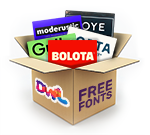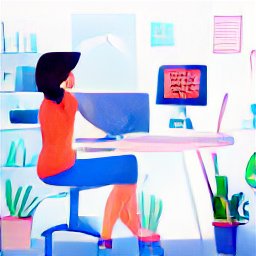If you enjoy working independently and have a passion for design, freelancing might be the perfect career for you.
As freelancing is becoming increasingly popular as an independent career option, it’s also becoming more competitive than ever. It’s important to establish your niche as a freelance designer to stand out from the crowd so that prospective clients can see your value and understand why hiring you would be beneficial for their business.
Being a successful freelancer means maintaining an ongoing stream of work without falling into extended periods of unemployment. With this in mind, this article will help you discover all of the aspects that are essential to developing as a freelance designer. Let’s take a look at how you can turn your freelance design career into something that has staying power!
Get Noticed
One of the first steps to becoming a successful freelance designer is getting your name out there. In order to get noticed, you need to establish a portfolio that showcases your design skills and the results you have achieved.
By developing a portfolio that is diverse, interesting, and visually appealing, potential clients can put themselves in your shoes and see how you would be beneficial for their business. Another way to get your name out there is through social media.
One way to establish yourself as an expert in your field is by building a following on social media platforms like Instagram or Twitter. These platforms make it easy for people to see what you are capable of doing and who works with you on a regular basis.
Build a Brand for future Job Prospects
The first step to becoming a successful freelance designer is to establish your brand. This includes developing your personal website and creating a portfolio that showcases your unique talents, skills, and expertise. It’s important that your website and portfolio display your qualifications (i.e., certifications from design school, professional design experience) as well so that potential clients can see the level of skill you possess.

Get a Free Font Every Week
Enter your email to receive a new FREE font every Friday.
Building a brand will also help you with future job prospects as it establishes credibility in the industry. You’ll be able to demonstrate that you have experience, education, and are proficient in all of the skills you want to showcase through your work. Additional branding can also reinforce how diverse and unique you are as an individual; this makes it easier for people to identify with what you offer which will ultimately make them more likely to hire you for their projects!
The first step towards an independent career is creating a personal website that showcases your skills and experience. The key to having success on this front is having the right keywords associated with yourself in order for potential employers or customers to find you online. It’s important that these keywords are specific enough so that they don’t compete with other freelancers within the same field of expertise. For example, if someone searches for “designers in New York City” there will be hundreds of results underneath those keywords but if someone searches for “independent designers in New York City” they
Keep Track of Progress
The first step to being a successful freelancer is tracking your progress. You need to know what you’ve accomplished and when with which clients. It’s important to keep track of your hours worked, the date you began working with a particular client, and the date you completed the project. This way, you can identify what has been productive for your business.
One great way to track your progress is by using a time-tracking software program like Timely or Toggl. By inputting all of your hours into these programs, you can see how much work you have done and how productive it was. You should also set milestones in these programs as well so that you get feedback on where you are personally and professionally. Keeping track of progress will make it easier for you to assess what worked best for your business and what hasn’t been effective.
Stay Organised and Collaborative
Freelancing is an exciting career option that allows you to work independently and in a flexible manner. With freelancing, you have the opportunity to choose your own hours and set your own tasks. This means that you have the flexibility to determine how much time you want to spend on each project and what projects you want to take on. You might be tempted to work in fits and starts with short bursts of work, but this isn’t sustainable if you want to grow as a freelance designer. So, it’s important that you stay organized.
As someone who freelances for a living, it’s important for you to be collaborative with your clients as well. This means that when working with a client, it’s important for both parties to get up close and personal with the nuances of the project so that both can understand their role in the process more clearly. This will make the collaboration between freelancer and client smoother from beginning to end.
Don’t Be Afraid of Negotiation
As a freelancer, it’s important to understand that you may occasionally be on the other side of the table and have to negotiate with your clients. Whether you’re working as a designer for a large corporation or a small business owner, it’s always worth asking for what you feel is justifiable compensation. You might not always know how a successful negotiation will go, but it’s always good practice to approach them with an open mind.
Wrapping Up
First, you’re going to need some basic knowledge of the design industry. You should have a good understanding of your work and be able to answer questions about your designs. Additionally, it’s important that you have a thorough understanding of the design process: how to brainstorm, plan, and execute a project. This will help you develop as a designer so that you can understand what types of projects you’ll enjoy working on.
Next, it’s essential that designers develop their portfolio. This work will be the first thing potential clients see when deciding if they want to hire you for their business or not. You don’t want prospective clients looking at your mediocre portfolio and then choosing not to hire you based on the quality of your work. To make sure this doesn’t happen, try following these suggestions for creating a professional-looking gallery: provide high-quality imagery; include different perspectives; create an engaging layout; showcase your diverse skills; use complimentary colours in your artwork; and use contrast in every photo.
Once you have all these factors in place, it’s time to focus on developing new relationships with potential clients and employers. There are many ways to do this—from attending events or conferences where people are looking for freelancers, finding contacts through social media sites like LinkedIn and Facebook, or reaching out to potential business partners who may be interested in hiring you specifically—but whatever method works best for you is useful

